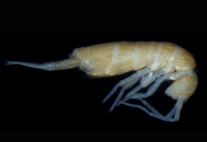Abstract
Sensory structure on the labial surface of five genera of Pentatomidae (Hemiptera: Heteroptera) belonging to two subfamilies i.e. Asopinae and Pentatominae have been studied using Scanning Electron Microscopy. Three representatives of the subfamily Pentatominae (phytophagous)—Dolycoris indicus (Stal), Plautia crossota (Dallas) and Piezodorus hybneri (Gmelin) and two of Asopinae (predatory)—Perillus bioculatus (Fabricius) and Eocanthecona furcellata (Wolff) were studied to morphologically characterize and compare the sensory structures present on the labium. Six types of labial sensilla were found on their labial tip and surface. The labial sensilla identified were sensilla peg (SP), basiconica (SB), campaniformia (SCa), chaetica (SCh), styloconica (SStc) and trichodea (ST). Their possible functions were discussed relating to morphology and location. A new form of sensilla basiconica was also observed in D. indicus. Sensilla styloconica were restricted only to the predatory pentatomid bugs. Cuticular projections (Cpr) on the sensorial region of the studied pentatomids were also observed along with labial cuticular pores.

